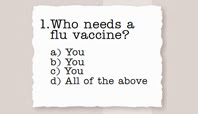I often feel fortunate to live in the Great Lakes basin where fresh water is plentiful and treating it for human consumption is relatively cheap. I’m more water-conscious than many, with my rain barrels and the way I reuse dishwashing water and cooking water to water my herbs and flowers. I still have moments where I’ll be running the shower to let it warm up and I think how lucky I am to live here. I could save the water in a big bucket and use it well, but I don’t have to. I’m not forced to value every drop.
When I’m hearing about droughts in California or Texas, I’m grateful to live in a climate where rain and snow are the norm. Rain fills my rain barrels in the summer while it nourishes the soil, and snow insulates the perennial plants all winter long before it melts and – you guessed it – soaks the soil and replenishes the water table.
It’s so easy to take water for granted. Turn on the tap, and it’s on. Stick a glass under the faucet; get a drink. Should be an automatic, right?
If you live in Flint, Michigan, wrong.
Flint is in the Great Lakes basin, too. Michigan, like my home state Wisconsin, is smack dab in the middle of this climate of rain and snow. And yet the good people of Flint are facing – have been facing – a water disaster of major proportions. And I think to myself, how could this happen?
To make a long story short, the city of Flint changed their municipal water source from Lake Huron to the Flint River in an effort to save money. Lacking a crucial chemical treatment, Flint River began corroding pipelines and sending iron deposits, among other minerals, into the homes and schools and businesses of Flint. Along with the discoloration and rust from iron came a silent enemy: lead. Excessive lead in a child’s bloodstream can cause brain damage and nerve damage that will last a lifetime. Flint pediatricians noticed a trend of rising lead levels in their patients. Flint residents noticed poor taste and major discoloration in their tap water. I said I’d make it short: Flint leaders and state officials brushed off concerns. Thousands of Flint residents, including children, have been exposed to toxic levels of lead.
Details are all over the web and the national news sources. At this time, the question is less “How could this happen?” and more “How could the Powers That Be ignore a crisis of this magnitude?”
I still feel fortunate to live in the Great Lakes region, where water can be plentiful and the climate keeps it so. But I have to wonder: if this happened in Flint, could it happen here?

